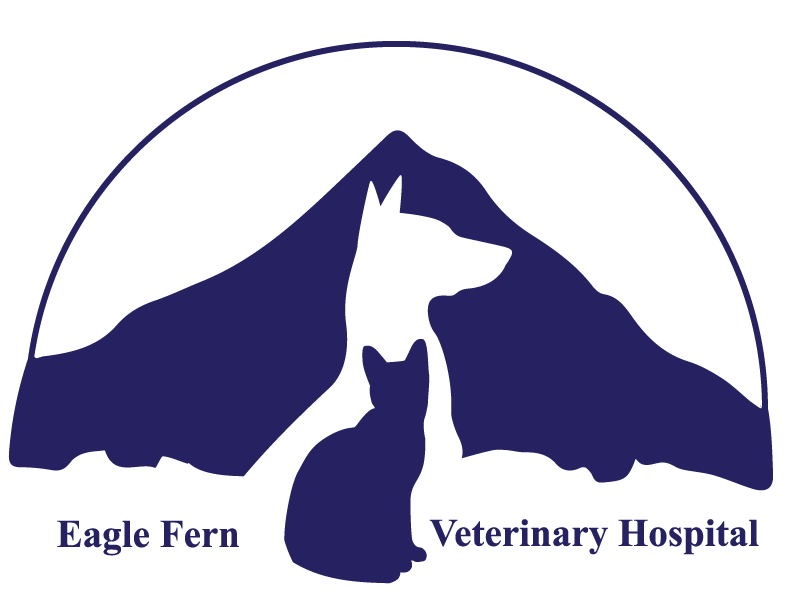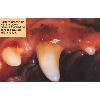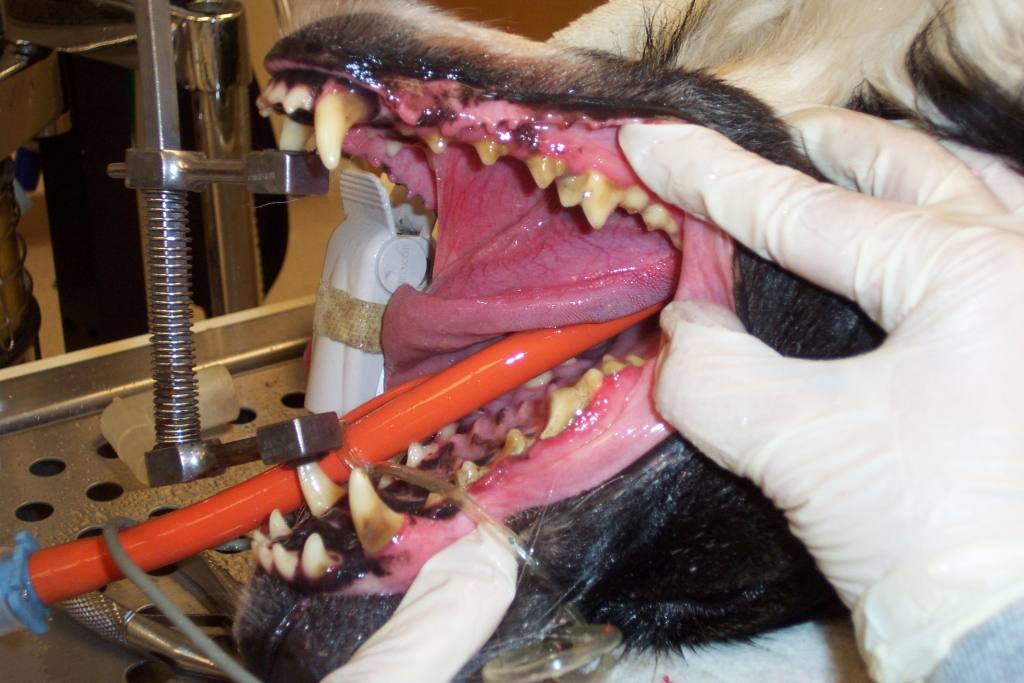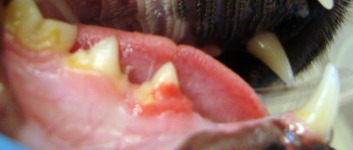|
 Dental Care Tour Dental Care Tour 
Take the Dental Care Tour to see how we turn a mouth with tartar, infection and bad breath into a healthy mouth with clean, polished teeth and fresh breath! It is not uncommon for our patients to feel like a puppy or kitten after a dental procedure. Plus, the breath smells fresher and you have a healthier pet!
Regularly examine your pet for signs of dental disease- bad breath, tartar, red, swollen, or painful gums, decreased appetite, difficulty eating, loose or missing teeth. If your pet has any of these signs it has periodontal disease.
Periodontal disease can start as early as 2 years of age. More than 85 percent of dogs and cats over four years of age have some form of periodontal disease, a progressive, painful inflammation and destruction of the normal tooth structure, leading to tooth loss. If periodontal disease is left unchecked, bacteria from the mouth can enter the bloodstream and travel to major organs, starting infections there. Damage to these organs caused by infection can shorten the lives of dogs and cats.
Dental care is important for the overall health of your pet. Good dental care consists of regular exams, cleanings, dental x-rays, application of OraVet Plaque Prevention Gel , dental vaccinations for dogs under 25# and daily dental home care.
|
Your pet's mouth will be examined and graded for periodontal disease at every visit and individual recommendations for dental care are made.
Even this pet with minimal tartar and gingivitis would benefit from professional teeth cleaning and dental home care.
|
|
Puppies and kittens are evaluated for problems related to baby teeth, missing or extra teeth, swellings and oral development. Periodontal disease can begin as early as 9 months of age, especially in small breed dogs and certain breeds of cats. In general, we recommend dental cleanings every 1-2 years in adult pets to prevent tartar build up, gingivitis and tooth loss.
|
Dental Care Admission
When your pet is admitted for dental care, our goal is to give your pet a healthier mouth and fresh breath while minimizing the risks of anesthesia. We strive to provide comfort for your pet with effective pain management, especially if extractions were involved, and loving nursing care during their hospital stay.
Your pet will be admitted to the hospital in the morning or night before the dental care procedure. The procedure will be done as early as possible to allow your pet to recover from anesthesia so they can be at home with you later that day.
 |
"Boomer" is about to have his teeth cleaned. Follow "Boomer" during his dental procedure.
|
Patient History
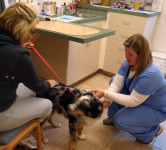
|
A thorough history aids in the evaluation of your pet. It is important to complete the medical history sheet as completely as possible.
|
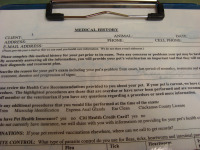
|
The medical history includes the reason for the procedure, diet, environment, preventive health care, current and past medical problems, and present medications your pet may be taking. Copies of your pet's health records if seen at another veterinary hospital should be provided for our veterinarians to review.
Pre-Dental Examination
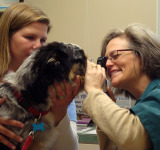 |
Your pet will be given a whole body exam. In addition, your pet's mouth will be examined prior to the dental procedure to help look for evidence of pain, bad breath, drooling, abnormal teeth, inflammation, oral tumors, ulcers or other dental problems.
|
The oral exam on an awake pet will allow your veterinarian to design a preliminary treatment plan. Only when your pet is anesthetized can a complete and through oral examination and precise treatment plan be formulated.
We also will look for any potential health problems or additional issues that should be addressed while your pet is under anesthesia. Common additional procedures that can be performed while your pet is under anesthesia are ear cleaning, microchip placement, nail trimming, vaccinations or lab tests.
If a potential problem is detected that would increase the risk of the dental procedure or anesthesia, it will be investigated further before your pet is placed under anesthesia.
Pre-Dental / Anesthesia Blood and Urine Screen
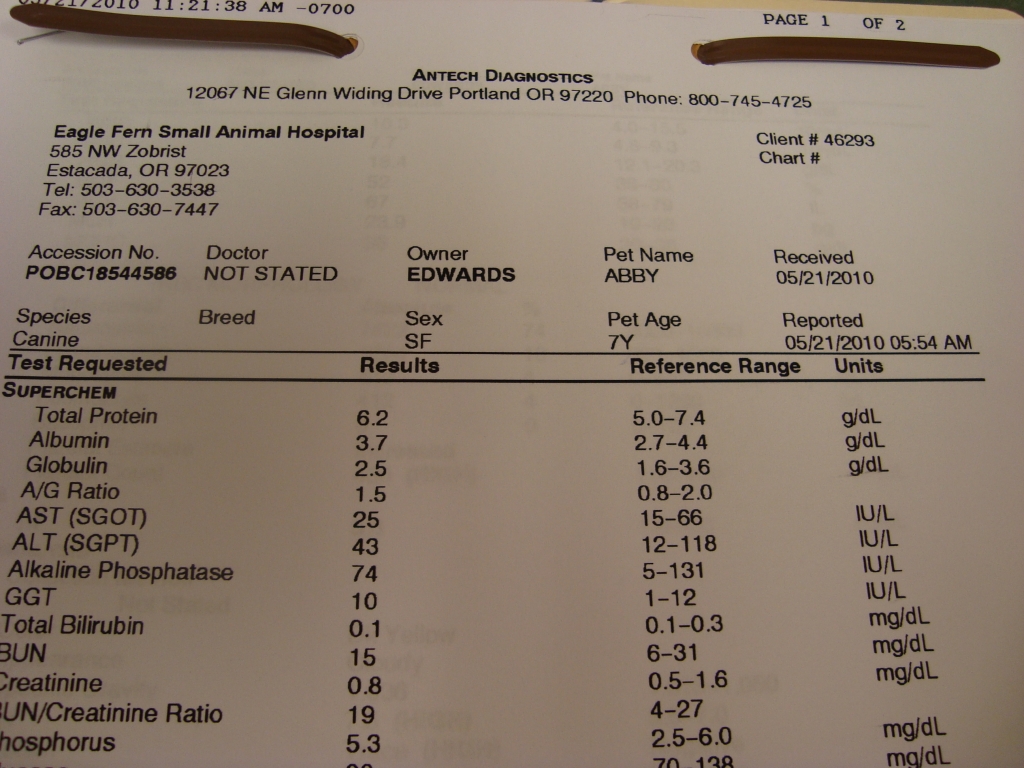 |
We recommend screening your pet to help detect any underlying problems which may result in higher risk or complications during anesthesia.
|
Your pet's physical status and age as well as the type of procedure being performed will guide your veterinarian as to what level of screening is needed for your pet. Most screening can be done in our hospital's laboratory on the day of your pet's dental procedure. If more extensive testing is needed, it will be sent to our outside lab prior to the day of your pet's procedure.
Screening will help detect anemia, organ function, and clotting ability. If a problem is found, it could require a change in the anesthetic drugs used or postponing the procedure until the problem is further investigated and treated.
Pre-Anesthetic EKG
 |
An electrocardiogram, EKG, evaluates the heart rate, rhythm, and size. Using telemedicine, we send your pet's EKG over the phone line! Within minutes it is evaluated by a board certified cardiologist.
|
The specialist will report any abnormalities seen on the EKG, a risk assessment for anesthesia and how to manage the anesthesia or may recommend not to do the procedure. If abnormalities are found they will make recommendations for further testing.
Since we have been using the service, we have diagnosed many pets with heart problems which were not detected on the physical exam or by medical history alone.
Intravenous Fluids
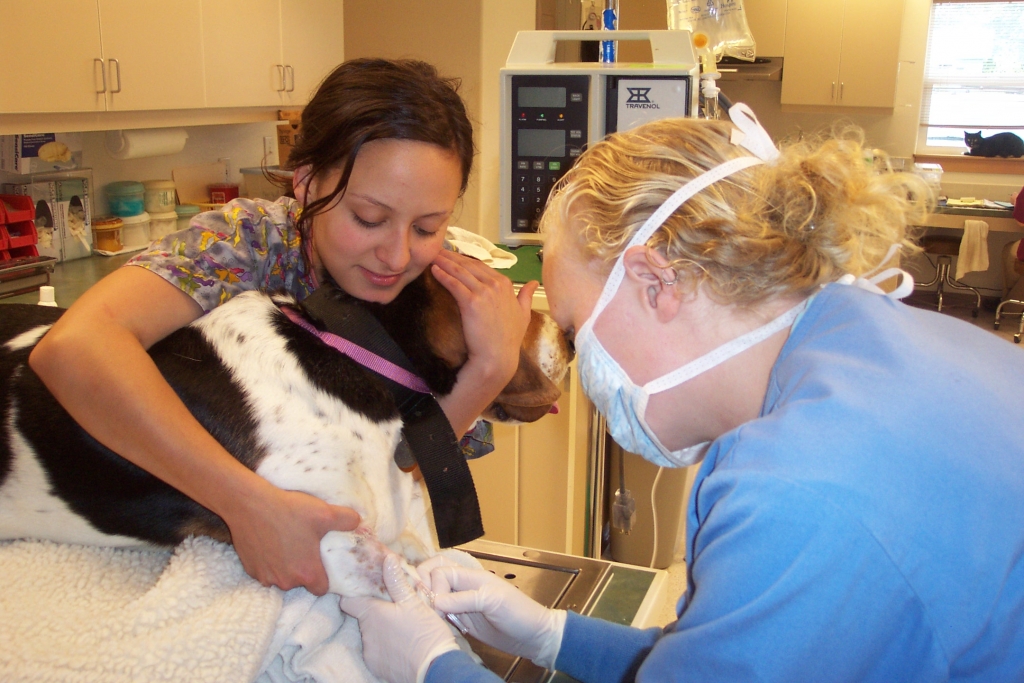 |
An intravenous catheter is placed to deliver intravenous fluids, anesthetic drugs, and medications. Having a catheter in place also provides a route to give drugs quickly into the circulation in case of an emergency, potentially saving your pet's life.
|
Providing intravenous fluids during an anesthetic procedure will help guard against low blood pressure and maintains hydration. This ensures that oxygen and nutrients continue to reach the vital organs. Overall, intravenous fluids will provide a higher level of safety during anesthesia for your pet.
Pain Management
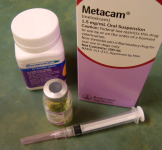 |
To ensure better comfort and safety for your pet, pain medication is given before, during and after the dental procedure if indicated. Pain management includes a multi-modal approach using a combination of different types of pain medications or injections, transdermal pain patches and/or local anesthetic blocks.
|
Effective pain management is the key to safer anesthesia by allowing lower levels of anesthesia to be administered, leading to more stable blood pressures and breathing.
Pain/sedative medication is given before the procedure to reduce the level of pain experienced after surgery by preventing "wind-up" pain. Pain medication is continued during the procedure and a few days afterwards to keep your pet pain free and back to its old self quicker.
Anesthesia
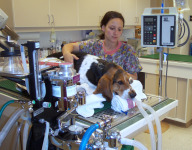 |
Your pet will first be given an injection of a pre-anesthetic consisting of a mild tranquilizer and pain medication. This is followed by a short acting anesthetic agent which allows your pet to be intubated -- a tube is passed down into the trachea.
|
This allows anesthetic gas and oxygen to be delivered to the lungs. The level of anesthetic gas is controlled to keep your pet anesthetized during the procedure, allowing for a quick and safe recovery.
Anesthetic Monitoring
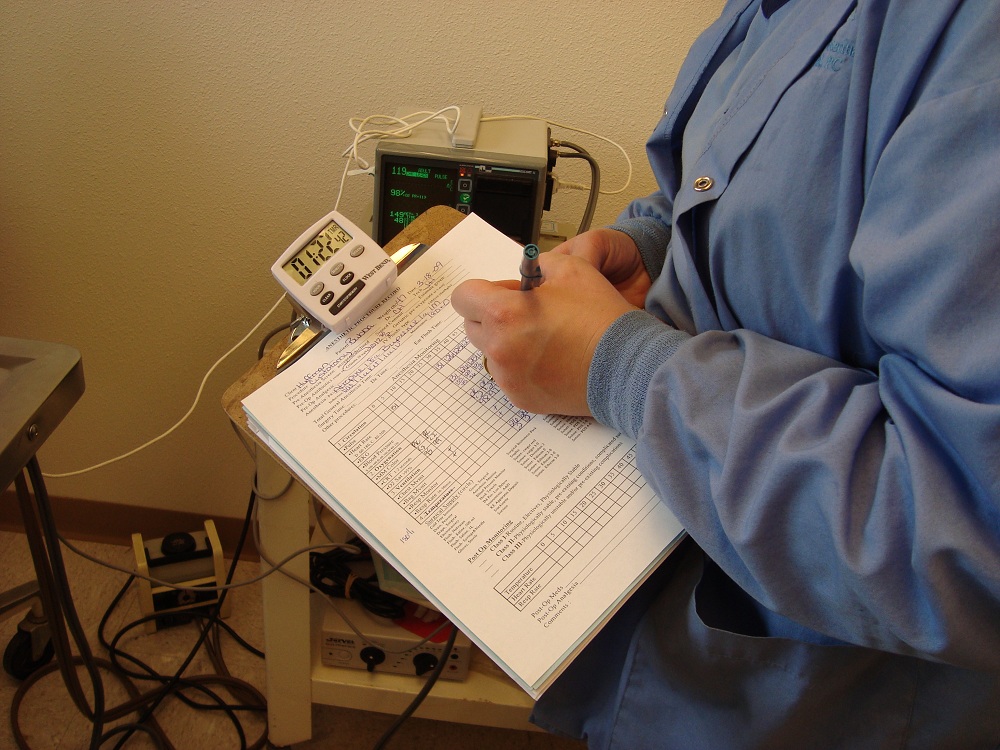 |
Your pet will be monitored by our dental technician throughout anesthetic induction, the procedure and recovery. They will track your pet's temperature, blood pressure, tissue oxygen levels, pulse, heart and respiratory rate, EKG, and mucous membrane color and refill time.
|
Anesthetic monitoring guides the adjustments to be made to levels of anesthesia, oxygen, and intravenous fluids during the anesthetic procedure. This helps avoid potential problems during anesthesia.
DENTAL CARE PROCEDURE
1. Oral Evaluation
|
After the pet is anesthetized it is placed on a warm 'sink table' that allows for drainage of the water used during the dental procedure. An oral exam is performed as described for the awake patient.
|
2. Dental Radiographs
 |
Dental radiographs are taken of the whole mouth at the initial examination and then periodically thereafter. Specific or localized radiographs are taken when pathology is discovered. Radiographs are necessary for an accurate evaluation and diagnosis.
|
3. Teeth Cleaning
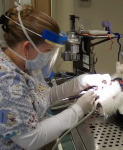 |
The teeth are cleaned by our trained dental technician using an ultrasonic scaler. Hand tools are then used to clean under the gumline. The teeth are polished then the mouth irrigated to remove debris and polishing paste. Lastly, fluoride is applied.
|

|
4. Plaque Barrier Application
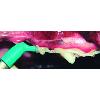 |
OraVet is a barrier gel that is applied after teeth cleaning to prevent plaque from attaching to the teeth. It is then reapplied by the owner to their pet's teeth on a weekly basis to maintain the barrier.
|
5. Evaluation for Abnormal Periodontal Pockets
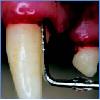 |
Using a periodontal probe, the depth of the attachment of the gingiva to the tooth is assessed and charted. Excessively deep pockets indicate more severe periodontal disease. Using the periodontal exam and radiographs, a treatment plan will be formulated and relayed to the owner.
|
6. Periodontal Therapy
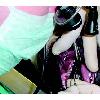 |
Periodontal therapy may include gingival flaps to clean tartar and debris under the gum line, excising excess gingival tissue to eliminate a pocket or placement of a periodontal antibiotic which promotes healing and reattachment of the gingiva to the tooth. Oral antibiotics are also indicated for healing the infection.
|
7. Extraction
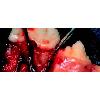 |
If the tooth is loose and radiographs demonstrate a loss of bone or a tooth root abscess, the tooth, unfortunately, will need to be extracted. Fractured teeth will either need a root canal performed by a veterinary dental specialist or an extraction at EFVH.
|
After the dental procedure, our staff will review your pet's dental health, special instructions and schedule a follow up visit in a few weeks.
8. Dental Home Care
We will review dental home care to see which method best suits your lifestyle and your pet's temperment. Ideally, you should brush your pet's teeth everyday! Click here for more on dental home care and to see videos on how to brush your cat's teeth and how to brush your dog's teeth.
If your dog weighs less than 25 pounds it is more at risk for periodontal disease. We recommend the dental vaccine to help decrease the production of plaque and subsequent tartar.
|
